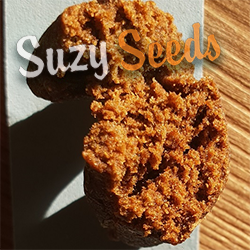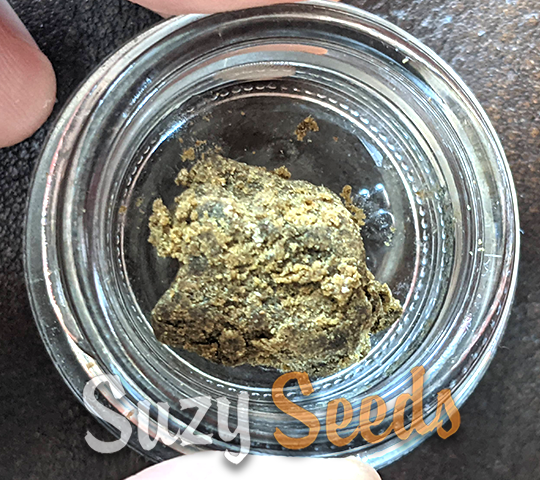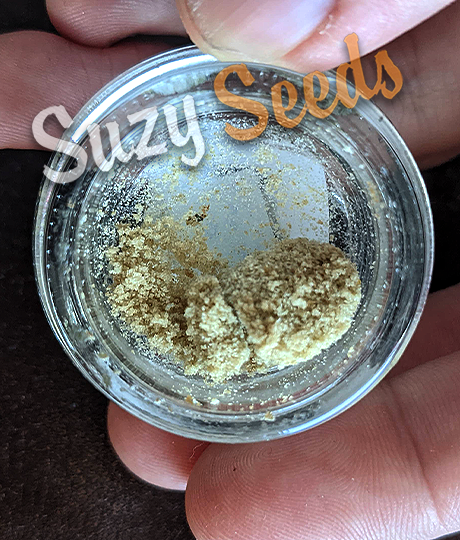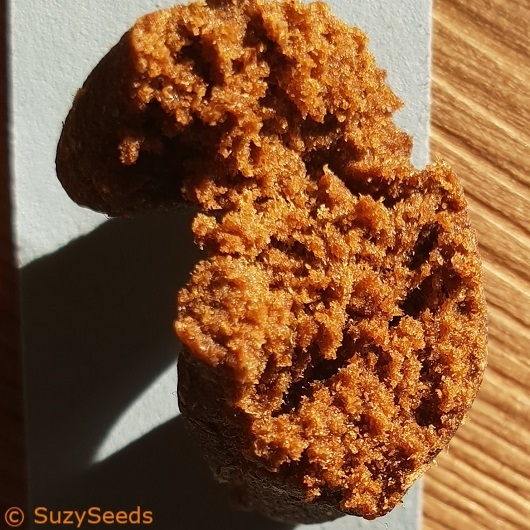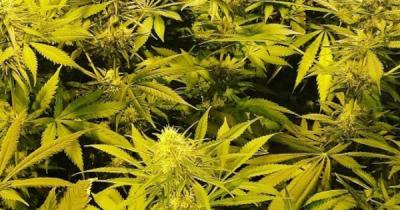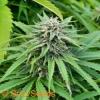Hey there, cannabis enthusiasts! Welcome back to another deep dive in Suzy's Cannabis World Blog. If you're here, you're probably curious about hash— that timeless, potent concentrate that's been captivating users for centuries. Whether you're a newbie wondering "what is hash?" or a seasoned extractor eyeing the latest solventless techniques, we've got you covered. In this updated guide, we'll explore hash's rich history, traditional methods, and the exciting innovations shaping its future. We'll also touch on global trends like Morocco's booming legal scene and spotlight top strains for killer yields. Let's roll!
What Is Hash? A Quick Refresher
At its core, hash (short for hashish) is a concentrated form of cannabis made by isolating and compressing the plant's resinous trichomes—those tiny, sticky glands packed with THC, CBD, terpenes, and other goodies. The result? A pure, potent product that's far stronger than flower, often hitting 40-80% THC depending on the method and starting material.
Unlike flower, hash separates the psychoactive bits from the plant matter, giving you a cleaner, more intense experience. But purity varies—traditional methods might leave some plant remnants, while modern solventless extracts can be almost crystal-clear.
Think of it as cannabis's OG upgrade: malleable, flavorful, and versatile for dabbing, edibles, or smoking. In 2025, with solventless demands skyrocketing (now over 20% of concentrate sales in mature markets like California), hash is hotter than ever.
The History of Hash: From Ancient Rituals to Literary Circles
Hash's story is as smoky as its aroma. The earliest written mention dates back to 1123 AD in a Cairo pamphlet accusing Nizari Muslims—aka the "Hashashin"—of indulging in hash-fueled rituals.
Legend has it Marco Polo later described these assassins getting high on hash as a reward for their loyalty, promising visions of paradise (and plenty of women) in Alamut.
Fast-forward to 19th-century Paris, where the term "Hashashin" inspired the exclusive Club des Hashishins. Literary giants like Victor Hugo, Alexandre Dumas, Charles Baudelaire, and Honoré de Balzac gathered at Hôtel de Lauzun from 1844-1849, munching hash-infused edibles for creative sparks. Their supply? Algerian imports, courtesy of France's colonial grip on the region until 1962. But hash's roots might run even deeper.
In India and Nepal, hand-rubbed charas—resin scraped from live plants—could predate the Hashashin, though hard evidence is scarce. By the 20th century, hash flooded Europe via trade routes from Kashmir, Afghanistan, and Morocco, fueling countercultures and even funding conflicts (more on trafficking later).
Today, hash bridges worlds: a nod to ancient traditions in a hyper-modern industry valued at billions, with global legalization pushing it toward mainstream wellness.
Traditional Extraction Methods: Hands-On Heritage
Before machines and micron bags, hash was a labor of love. Here's how it started—and how it's still done in places like the Rif Mountains.
Hand-Rubbed Charras from India and Nepal
Picture workers trekking through Himalayan fields, gently rubbing buds of live cannabis plants between their palms. The trichomes stick like glue, forming a dark, sticky residue that's scraped off and rolled into balls or ropes. It's artisanal, earthy, and potent—often 20-60% THC with a spicy, piney vibe. No sieves, no ice: just hands and heat from the sun. While romantic, it's back-breaking and yields vary wildly.
Dry-Sieved Hash from Morocco, Lebanon, and Afghanistan
In Morocco's Rif region, dried plants go into a drum or over silk screens, beaten with sticks to shake loose the kief (trichome powder). It's sifted through finer meshes for grades: blonde (top-shelf) to dark (full-plant). Then, it's pressed into those iconic bricks using heat and pressure—sometimes with hot water bottles in Afghanistan for that signature malleability.
But here's the rub: Traditional ops mix males and females, so strains aren't pure. Sand from the desert creeps in, and without regs, contamination's rife—like that 2018 Spanish study finding E. coli in 88% of samples, often from smuggling via... well, you know. Hygiene? Hit or miss.
There are some problems with this though. For example, male and female plants are not separated from each other, so that the final product is usually not exactly the strain they claim it to be. In addition, there is simply also a lot of drifting sand in Morocco that can penetrate every part of the process, so that you also get sand in your hash.
The country now wants to legalize medicinal cannabis, but unfortunately, it does not want to go so far as to legalize hash production.
Worldwide Trafficking: From Rockstars to Rogue Groups
Hash's portability made it a smuggler's dream—compact, potent, and easy to hide. British kingpin Howard Marks ("Mr. Nice") turned it into an art form in the '70s-'80s, stashing kilos in rock band gear (think Led Zeppelin roadies) flown from the UK to the US for massive markups. His wild life inspired a book and film.
The Dutch coffeeshops played safe haven post-1976, classifying hash as "soft" drugs separate from heroin. Smuggling boomed, but so did dark sides: Profits funded groups like Hamas, the Taliban (though heroin edged it out), and others.
Today, with legalization, trafficking's down—but illicit flows persist, especially from Morocco's 27,000+ unregulated hectares.
Morocco's Legal Glow-Up: From Illicit to Export Powerhouse
Big news since our last post: Morocco's flipping the script. In 2021, they legalized medical and industrial cannabis via Law 13-21, birthing ANRAC (the National Agency for Regulation) in 2022.
By 2023, the first legal harvest hit 294 metric tons of Beldia landrace.
Fast-forward to 2025: Over 3,000 licenses issued, 5,000 farmers in co-ops, and 5,800 legal hectares blooming.
They're exporting medical hashish to partners like Swiss firm Medropharm, eyeing millions in revenue.
Recreational? Still off-limits, but pardons for 4,800+ growers signal a thaw.
This could clean up quality (bye, sand and bacteria) and boost Rif economies, though black market temptations linger.
Morocco's now a global leader, blending tradition with traceability.
The Future of Hash Making: Solventless Revolution and Beyond
The last decade? Game-changer. Mila Jansen's 1994 Pollinator kickstarted modern drysift, but 2020s legalization exploded things. Fresh-frozen material, AI-optimized grows, and minor cannabinoids (like CBN for sleep) are the new wave.
Hash culture's booming—expect more cafes, vapes, and events like Ann Arbor's Hash Bash.
Drysift: The Clean Classic
Machines like the Pollinator tumble dried buds over screens, yielding powdery kief pressed into hash. It's simple, scalable, and revived home production. Pro tip: Go gentle to avoid greens.
Ice-o-Lator (Bubble Hash): Ice Water Magic
Add ice to the mix—trichomes snap off in cold water (THC hates dissolving). Filter through micron bags (25-220μm) for grades: 90-160μm is prime full-melt. Yields soft, round balls with minimal plant bits. In 2025, fresh-frozen harvests (harvested and flash-frozen at peak) preserve terps like never before.
The product you eventually get is a collection of light-colored crystals of THC which is extremely pure.
Ice-o-Lator + Dry Freezer: Crystal Purity
Only since a couple of years ago, we saw the next revolution. It looks a lot like a concentrate, but it is hash. The plants are harvested extra early when the trichomes (the balls with THC) are still pristine white. The rest of the process is almost the same as the dry freezer method, which is also used here. The end result is a flawless product that is so unstable in itself that it can become liquid. And with that, it can be dabbed, or in other words, evaporated as a concentrate.
Full Melt + Early Harvest: Dab-Ready Bliss
Harvest early (milky trichomes), process as above, and boom: Unstable, liquid-like hash that fully melts (6-star quality). OG Kush shines here—pure, glassy, and dabbable.
Rosin: Heat and Pressure Perfection
Press any solventless hash (or flower) in a rosin press (180-220°F, 500-1000 PSI). Hash rosin's cleaner—no flower bits. Emerging: Ultrasonic-assisted presses for max yields without solvents.
You can make Rosin with flowers too, but the results are not as good and pure as rosin pressed from hash. Hashrosin will not have any flower material left, while flower rosin might.
Concentrates extracted with a solvent
And finally, we reach the concentrates extracted with a solvent, like BHO (Butane Hash Oil), concentrates extracted with CO2, and oil extracted with alcohol. Solvent methods (BHO, CO2) are pro-only—flammable butane? No thanks at home. Alcohol for RSO? Safer, but stick to solventless for purity.
Cutting-Edge Solventless Tech in 2025
- Ice Bath Tek: A contaminant-rinsing evolution of bubble hash for ultra-clean results.
- Acoustic/Electrostatic Sieving: Sound waves or static zap trichomes free—lab-level precision at home.
- Automated Systems: Vortex mixers and chillers (down to 35°F) minimize agitation, boosting quality.
- THCA Bubble Hash: Hemp-derived, 68%+ THCA variants in strains like Jack Herer—legal loophole magic.
 Top cannabis strains for making hash
Top cannabis strains for making hash
Some cannabis strains are simply better than others for making hash. This is based on a couple of different things. Some cannabis strains have better resin production which makes them ideal for extracting them for hash. Others have flavors that work sometimes better like hash than they do like flowers. There are quite some cannabis strains we have available that are great for making hash, like Afghan Skunk, Premium Shiva Skunk, OG Kush, and our latest additions COVID-18 (OG18 x AK47), Lemon Juice OG and Lunio OG.
Wrapping Up: Your Hash Journey Starts Now
From Hashashin haze to 2025's freeze-dried full-melts, hash evolves without losing soul. With legalization rolling (DEA rescheduling watch?), expect cheaper prices, more variety, and solventless supremacy.
Ready to make your own? Start small, stay clean, and savor the craft. Got questions or a fave strain? Drop a comment below—we're all ears (and lungs).






